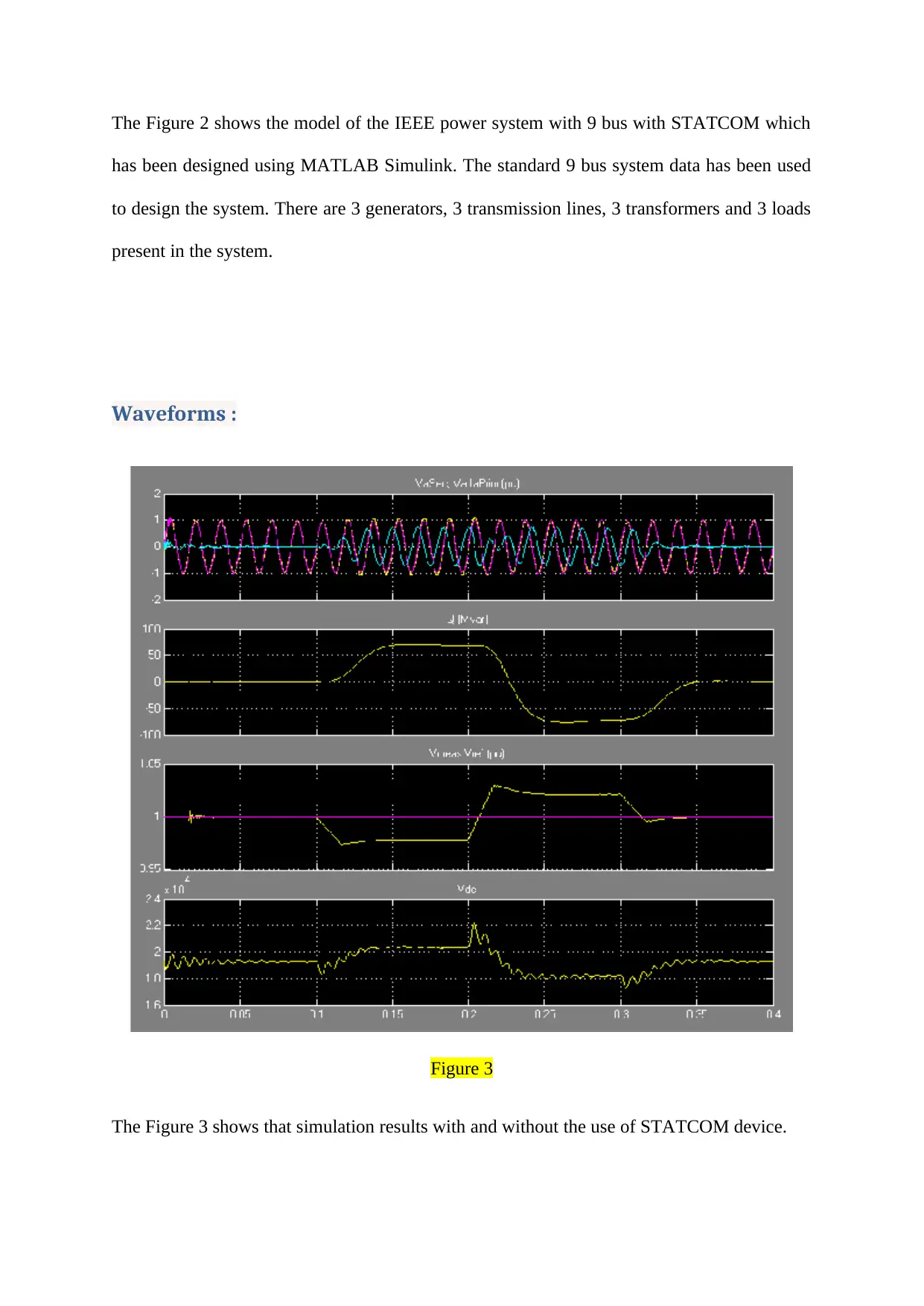Improve Transient Stability of IEEE 9 Bus System Using STATCOM
VerifiedAdded on 2022/08/21
|5
|585
|19
Project
AI Summary
This project focuses on enhancing the transient stability of an IEEE 9 bus power system using a STATCOM, a shunt FACTS device. The system is modeled and simulated in MATLAB Simulink. The STATCOM, comprising a Voltage Source Inverter (VSI) and a gate pulse generator, is connected to the transmission line via a coupling transformer. The simulation results, comparing the system with and without STATCOM, demonstrate that the STATCOM reduces fault magnitude, compensates for reactive power, and improves the voltage profile, thereby enhancing the overall transient response. The project details the design of the STATCOM, including the gate pulse generation circuit and the VSI, and analyzes the waveforms to illustrate the device's impact on system stability. The IEEE 9 bus system consists of three generators, three transmission lines, three transformers and three loads. The results show how STATCOM improves the transmission capacity, reduces the losses and improves the voltage profile of the system under fault conditions. The use of STATCOM device improves the transient response of the system.
1 out of 5












![[object Object]](/_next/static/media/star-bottom.7253800d.svg)